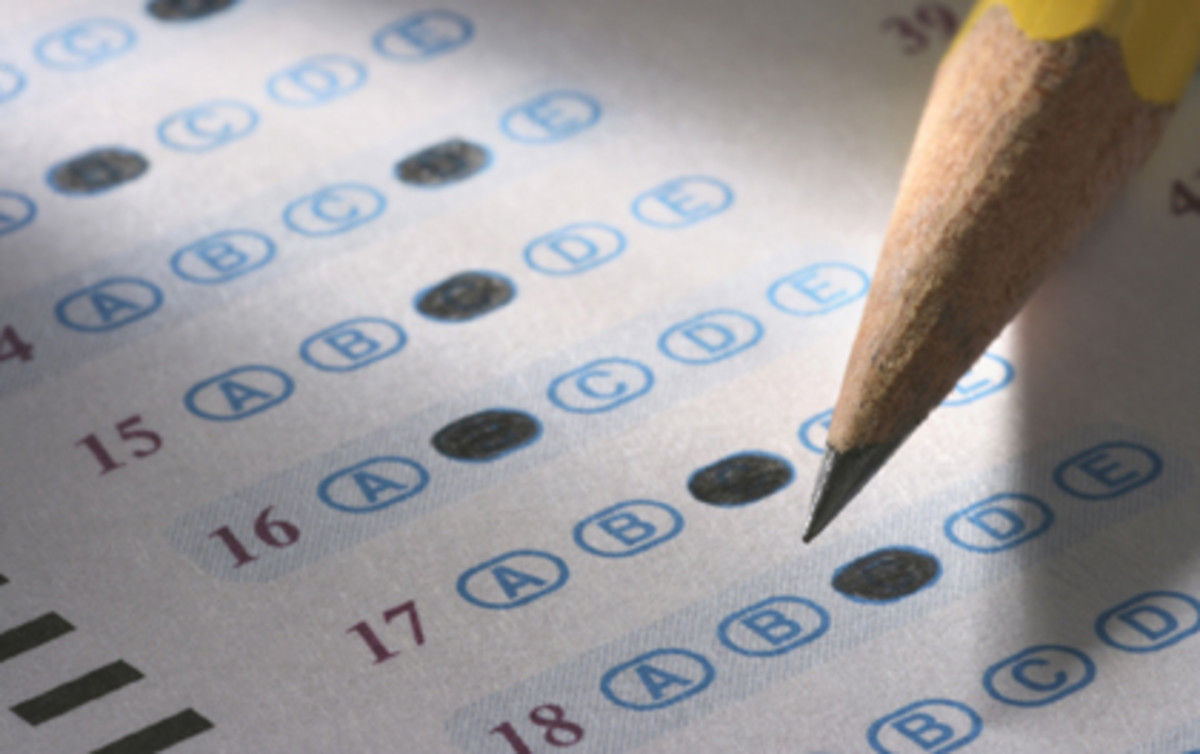The American SAT Vs. The Chinese College Entrance Examination
Overview
The college education offered by the United States has a widespread reputation for quality, and has cultivated much creative talent. The American college education is indeed outstanding, however, the SAT college entrance exam is inferior to its Chinese equivalent. Upon analysis, the Chinese College entrance exam is a more effective method of testing a student’s intellectual aptitude. Its broader range of subjects makes it fairer, and it provides a basis for a student’s pursuit of interests and career decisions.
The SAT, short for Scholastic Assessment Test and administered by the American College Board, is a standardized test for admission to U.S. universities. The SAT score is an important reference for international high school students applying to American schools and for scholarships. Although there are other university entrance exams for American students, including ACT, AP, TOEFL and IELTS, the SAT is the most common, is taken by millions of students, and has the greatest influence and degree of recognition. Overseas SAT examinations are held five times yearly, with two additional sessions within the USA.
The Chinese College Entrance Exam
In China, the college entrance examination can take three forms: the national college entrance exams, the self-study exam, and the adult college entrance examination. This exam score sets the entrance qualification standard for candidates. It helps students to select and enter universities, and the scores can directly influence the university level at which admission is set. The examination is administered by the Ministry of Education, with the papers being set by the Ministry of Education or the “Independent Proposition” provincial authorities. The examination is held annually on June 7 and 8, which have become supremely important dates for every Chinese student.
Although the two countries' exams are similar, they are also very different considering that they originate thousands of miles apart. It is important to analyze these differences because the exams are a huge step to the future for students applying to college. Ideally, the outcome of the test should give the student insight into their abilities, which will provide them with a successful future. The most significant differences between these exams relate to method and content, which have a huge impact on the tests’ outcomes.

The Chinese Exam is Comprehensive
The Chinese college entrance examination is preferable because it has more subjects than the SAT, which may help students find their interests. The 1994 reorganization divided the SAT into SAT I and SATⅡ, which are a reasoning test and a subject test respectively. The SATⅠexamination subjects cover writing, critical reading and mathematics, and SATⅡexamination, which is not mandatory, covers English, history, language, mathematics and science. The Chinese college entrance examination generally has three formats: Liberal Arts, Science and “Other.” The “Other” category, which is less common, is for those who want to develop expertise in a special subject such as painting, music or sports. These students will usually take special college entrance examinations that depend on the respective subject. Chinese, mathematics and English are all compulsory for both Liberal Arts and Science students. Liberal Arts students take history, politics and geography as additional compulsory subjects, whereas Science students take physics, chemistry and biology. The division of liberal art and science can help students determine a proper career path, because it focuses on subjects they do well in. Students usually begin planning for higher education in the second year of high school, which gives them time to make important decisions. In contrast, the SAT I only examines critical reading, writing and mathematics, and SAT II is optional and barely recognized in many universities. The test does not properly expose some intelligent students, like the ones that excel in science and literature, for example. This is discouraging for many students who have interests in other subjects. For instance, a physics lover will dismiss his devotion to physics, in order to practice writing, because his science knowledge will not count in the SAT.
Analysis and Comparison
Regarding the evaluation of a student’s aptitude, the Chinese college entrance examination appears to be fairer than the American SAT. The SAT has been criticized by many scholars for not being fair enough. In a study on "American Standard Examination Reform," it was apparent that the majority of questions on this standardized test are multiple choice, and cannot evaluate students’ organizational and analytic abilities. The Chinese college entrance examination has a more accurate method of scoring math skills, whereas the SAT score is far less useful. The grading of SAT math narrowly focuses on the result of multiple choice questions and fill-in-the-blanks. In contrast, the Chinese entrance exam’s math tests cover an array of useful question types, such as logical deduction and geometry proofs. Consequently, a student’s answers and the deduction or proof process result in comprehensive grades. These scores may reveal the area of study that is most suitable for the student, considering his abilities. Another downfall of the SAT is that it limits the subject matter being examined to Critical Writing, Reading and Mathematics. It does not fully evaluate the entire spectrum of knowledge. Assuming that most students get average scores in math, the SAT test takers who excel at English will have a seemingly unfair advantage. In comparison, the diverse subjects on the Chinese college entrance examination are fairer in evaluating hardworking students. The SAT is a standardized test, and it does not account for variations in academic achievement in students of different race and gender. The examination content has racial prejudice, which hinders the equality of students entering college. However, everyone in China can enter any university, so long as they can achieve the enrollment mark, and there is no rejection. While there are gaps between the wealthy and poor, and urban and rural, the impartial Chinese college entrance examination gives the children of vulnerable groups the opportunity to improve their fate.

Does the Exam Help the Student Find his Career Path?
The Chinese college entrance examination helps students expand their horizons by making more accurate judgments in their choice of profession. High school is an important growth period for young people, and it is the time to experience many different areas of study. Throughout school, a student will gradually understand their interests and realize their strengths and weaknesses. A wide variety of learning is imperative to help students broaden their vision by trying a diverse range of subjects. The limited scope of the SAT may cause a student to detract from their own best interest, which is discovering their most suitable future occupations. Disillusionment may occur when they realize that they have been focusing on subjects that they dislike, just so that they can score high on the SAT.
The American SAT Needs Future Improvement
The major goal of these exams is to determine a student’s readiness for college, and ideally it should test a multitude of subjects. Students studying the nine subjects of the Chinese college entrance exam have a greater chance to discover their strengths and weaknesses and can choose a successful profession. Considering these three differences, the Chinese college entrance examination is obviously superior to the American SAT. The Chinese college entrance examination is called the fairest test in the world, and therefore could usefully serve as a model for improving the SAT.







